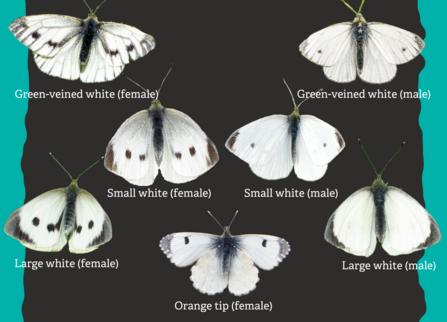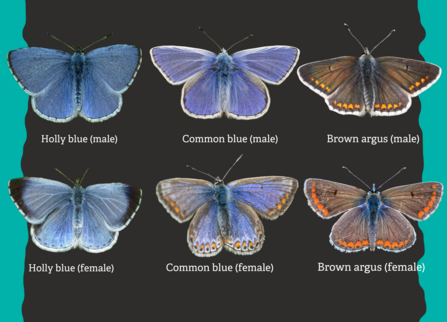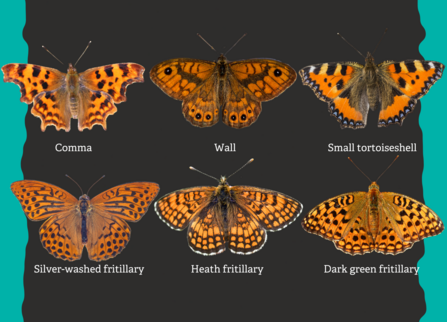Wonderful whites
Arguably, the trickiest of the UK butterflies to differentiate are those with white wings.
To distinguish between the small and large white butterflies, you cannot rely on size alone. Their dark wing tip markings are a helpful clue, with small whites having more horizontal than vertical markings, and vice versa for large whites. Also, the dark wingtip isn’t as pronounced in the small white as the large white. The females of small whites and large whites also have two forewing spots instead of the singular one that can be seen on the males. When green-veined whites are added to the mix (particularly the male ones), it gets even trickier! Look for broken wing tip markings on the trailing edge to identify a green-veined white. You may also spot the underside of the hindwing, which has veins highlight by green scales. Despite the name, orange tip female butterflies lack the vibrant orange colour of their male counterparts, making them harder to distinguish from other butterflies. For this species, look for the more rounded wing tips. You can be certain of a female orange tip by seeing the underside of their wings, which are mottled dark green-yellow against a white base.




